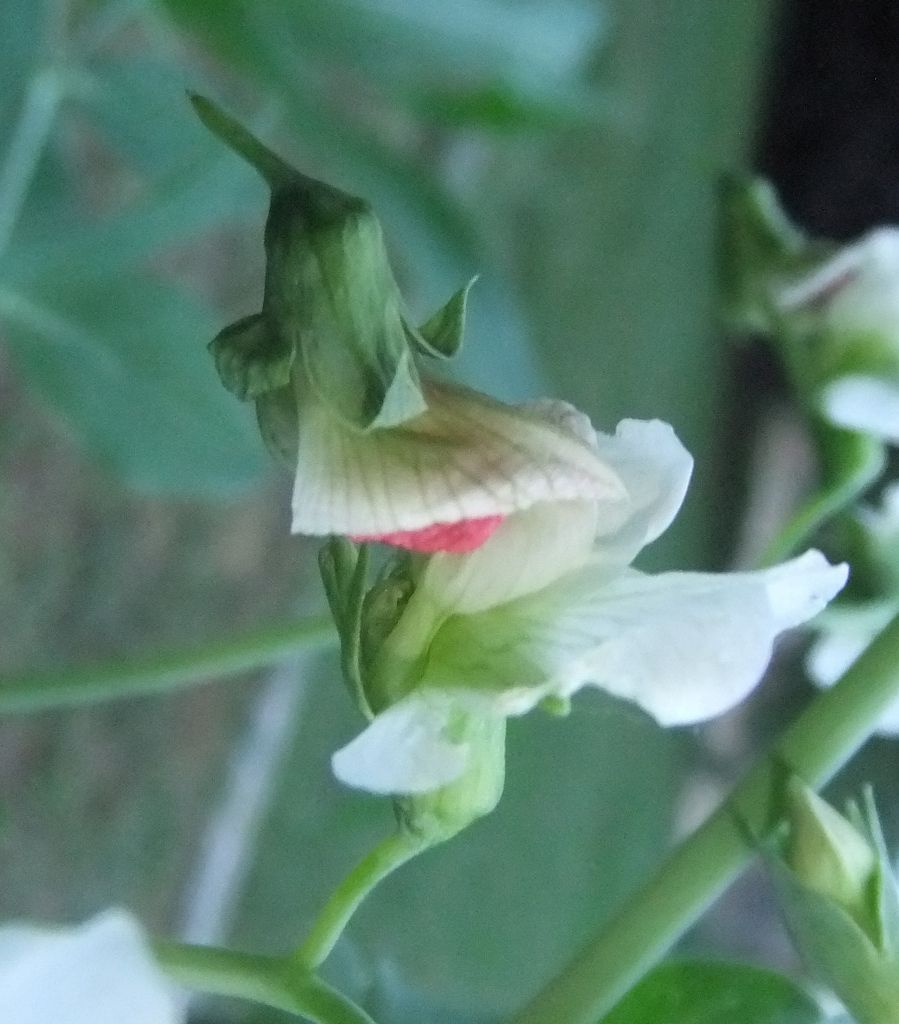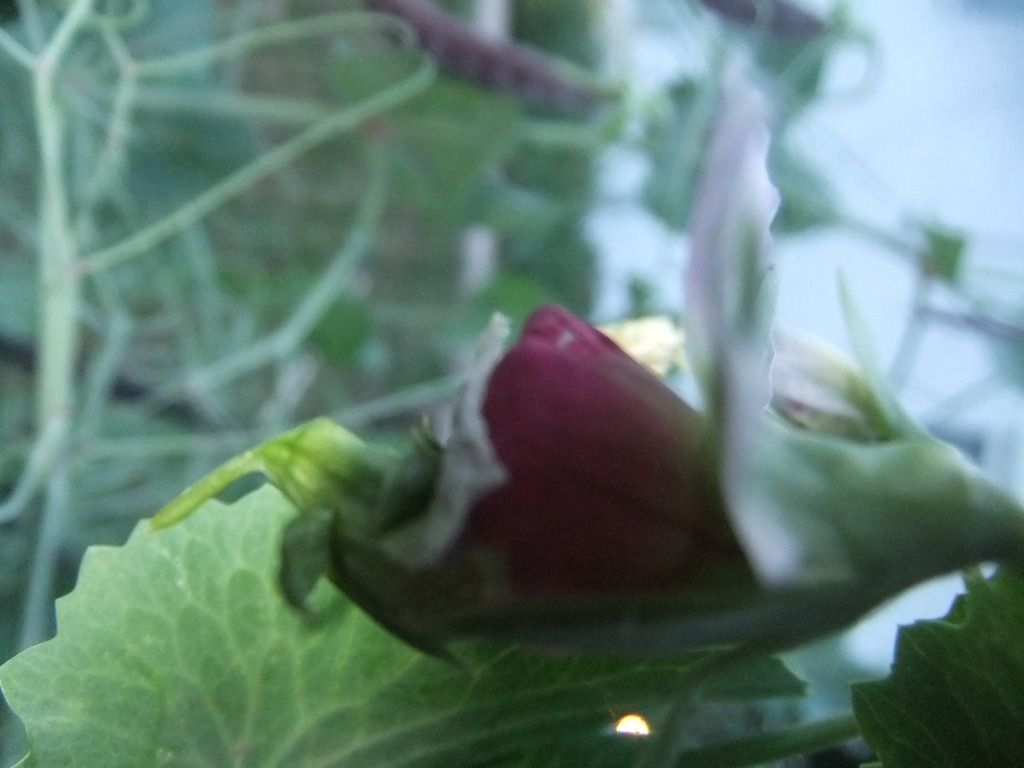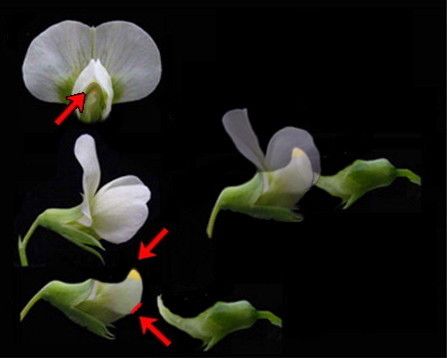|
|
Post by bellamella on Dec 15, 2014 6:04:07 GMT -5
Hello Rebsie!
I am trying to contact you in terms of two things:
I have a red poddded pea going, that is not a snow pea, but for seeds, and I was going to ask you, how your project has evolved, and I am looking for true potato seeds, especially for fingerling types. If ever you have some spare from your projects, let me know!
Thank you
Harriet
|
|
|
|
Post by templeton on Dec 16, 2014 15:56:22 GMT -5
Bella,
welcome.
Rebsie hasn't posted here for years, although there are a number of people, and threads, here that might be able to help. What were your questions?
T
|
|
|
|
Post by Joseph Lofthouse on Dec 16, 2014 16:49:30 GMT -5
I was inspired by Rebsie's discovery that red podded peas can eventually be created by crossing purple podded peas with yellow podded peas. I started working on a project to develop red-podded sugar snap peas. That part of the project isn't done yet, but there are plenty of red-podded soup peas. For example:  Also see this thread: alanbishop.proboards.com/thread/1772/red-podded-pea-project |
|
|
|
Post by keen101 (Biolumo / Andrew B.) on Jul 1, 2015 13:50:14 GMT -5
I've been having success crossing this year using a small metal tweezer and by taking the pollen donor flower and only partially opening it. Then i use it as a sort of "pollen-hood" that slips on perfectly to the the receptive stigma and holds on (and also helps protect the pollen from drying out too fast and rain from washing it off. It seems to increase my rate of successful crosses.
|
|
|
|
Post by templeton on Jul 1, 2015 19:44:27 GMT -5
I've been having success crossing this year using a small metal tweezer and by taking the pollen donor flower and only partially opening it. Then i use it as a sort of "pollen-hood" that slips on perfectly to the the receptive stigma and holds on (and also helps protect the pollen from drying out too fast and rain from washing it off. It seems to increase my rate of successful crosses. got some pics, keen101 (Biolumo / Andrew B.)? T |
|
|
|
Post by keen101 (Biolumo / Andrew B.) on Jul 1, 2015 22:53:35 GMT -5
Here are two photo's i tried to take tonight. And a diagram i made just now by "gimping" some pea flower photo's online. Gimp is the Open Source (free) equivalent to Adobe Photoshop. The Diagram show how there is a concentration of pollen at the top of the keel. By making a small opening or incision at the bottom of the keel the whole flower can be preserved to act as a "pollen hood" that not only "clings on" to the stamen, and keeping pollen on it longer, but i think it will also help prevent pollen drying out as quick from the sun or falling off in the wind, or from rain or irrigation water. It's just a technique i came up with, so i'm not really sure how well it works. But the basic principle is why mess with natures own engineering. Stick with what works. My climate is known for having radiant sunlight and arid dry air. So, hence my inventing this method.     |
|
|
|
Post by templeton on Jul 2, 2015 5:14:21 GMT -5
Thanks, nice idea.
And great pics - they're kissing!
T
|
|
|
|
Post by keen101 (Biolumo / Andrew B.) on Jul 3, 2015 7:23:09 GMT -5
|
|
|
|
Post by steve1 on Nov 24, 2015 6:14:29 GMT -5
Hi all, just an addition to this thread - I use tape to cover over crosses after the cross is performed. I found successful pod forming crosses were 44/47 last year although somewhat less this year with losses to extreme heat when summer arrived in September (35 degrees C outside and 45+ in the tunnel). However you do the cross, use the keel (if its there) and the the petals to cover the stigma. Tape keeps up the humidity. Only one note, you need to watch closely and when the pod is starting to form remove the tape and relabel. Other wise kinked pods and some seed loss will occur. I first read reference to this in Carol Deppes first book, so not my idea but I can vouch for it. Cheers Steve Pea taped after cross dl.dropboxusercontent.com/u/94877168/PeaCrossed.jpgPod forming: www.dropbox.com/s/xq25sz81n8c39oy/PodForming.JPG?dl=0Oops too long! www.dropbox.com/s/ghfdwn6fkvghdpl/BentPod.jpg?dl=0 |
|
|
|
Post by raymondo on Nov 25, 2015 4:03:36 GMT -5
Thanks for the pics and the links steve1. Does anyone know how many genes control pod number (inflorescence with two flowers versus a single flower)? I looked at the John Innes Centre database but when you ask for genes relating to pod number you get wp - waxy pod. I believe that environment also plays a role. Basically, if I cross a double flowered cultivar with a single flowered cultivar what can I expect in terms of segregation for the double flower trait, assuming ideal conditions? |
|
|
|
Post by steve1 on Nov 25, 2015 6:07:02 GMT -5
raymondo No problem. Two genes influence flower numbers Chapter 7 by Blixt in Genetics 1974 (by King) - fn and fna. According to the JIC germplasm database the two dominant forms = 1 flower per node, 1 dominant/1 recessive = 2 flowers/node and double recessive = > 2 flowers/node. data.jic.ac.uk/cgi-bin/pgene/default.asp?ID=303That means I suppose for any single flowered F2 has a 2/3 chance of having double flowered offspring and if both genes are in the mix a 4/9 chance of recovering the >2 flowered version. I must start noting what the F1's are doing more. Single flowered F1 means you have both recessive genes in the cross. That's straightened some things out in my head. Cheers Steve
|
|
|
|
Post by steev on Nov 25, 2015 19:17:53 GMT -5
Thanks, nice idea. And great pics - they're kissing! T Um, no; that's not how fertilization occurs; sweetly innocent of you to think so, though. |
|
|
|
Post by keen101 (Biolumo / Andrew B.) on Nov 26, 2015 16:07:47 GMT -5
Um, no; that's not how fertilization occurs; sweetly innocent of you to think so, though. I'm not exactly sure what this comment is meant to convey. If your having a knock at that particular technique fine, i never said it was the best. But it worked well for me this year. Just a case of de-pollinating the receptive flower, snipping off a donor flower, and sliding the pollen pouch in a position that touches the receptor spot while staying in place long enough to fertilize. To say it doesn't work would not be correct. |
|
|
|
Post by raymondo on Nov 26, 2015 22:44:24 GMT -5
keen101 (Biolumo / Andrew B.), I think you'll find steev's comment is a friendly jibe at T's comment about them kissing and not at all related to the method you described, which by the way seems very useful. Thanks for the info on the genes involved steve1. Much appreciated.
|
|
|
|
Post by steev on Nov 27, 2015 12:52:54 GMT -5
Good catch, Ray.
|
|